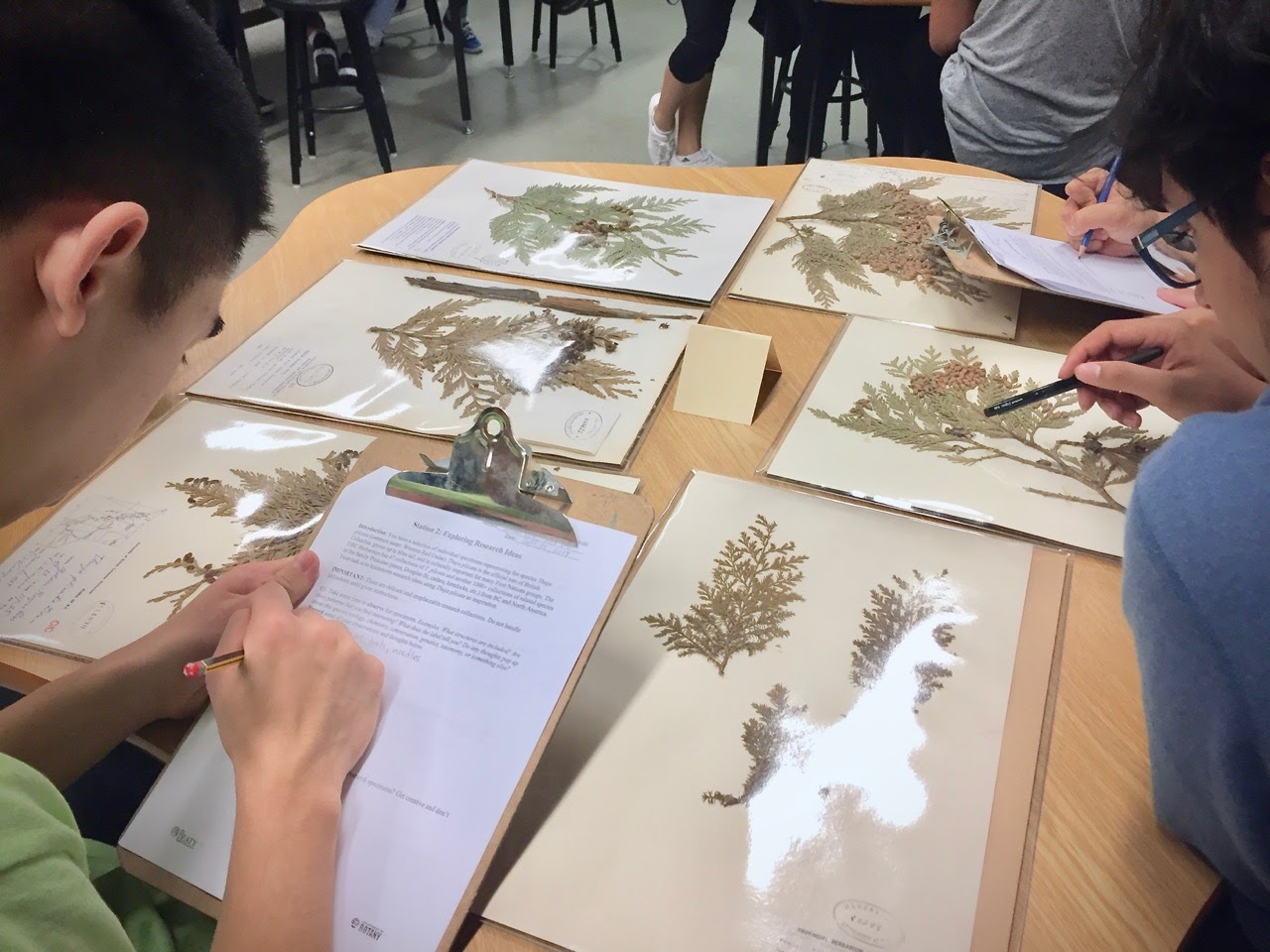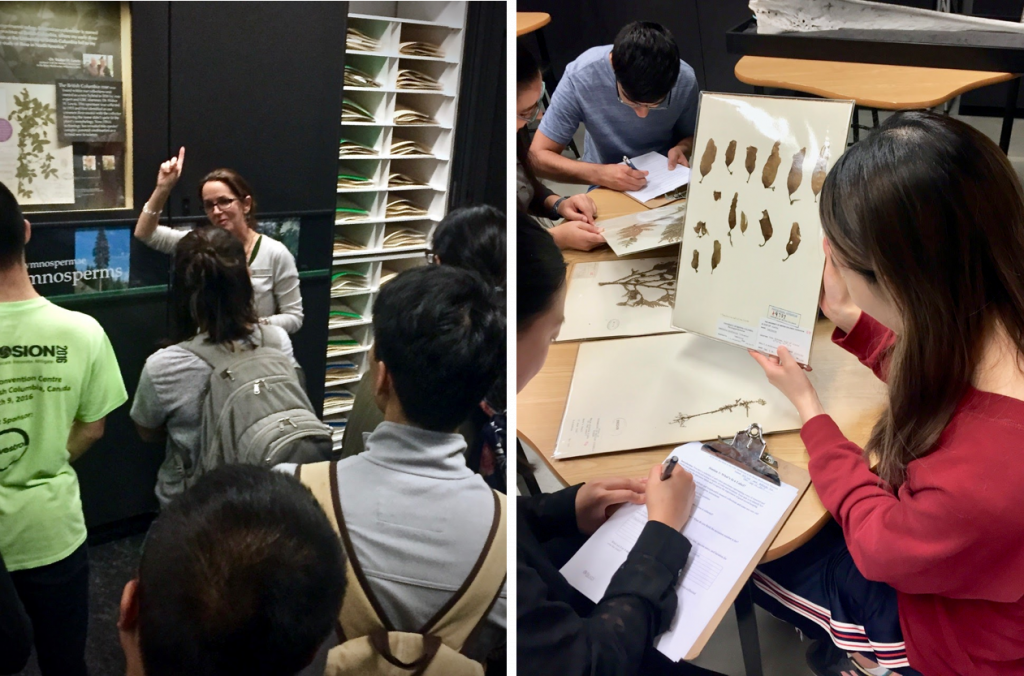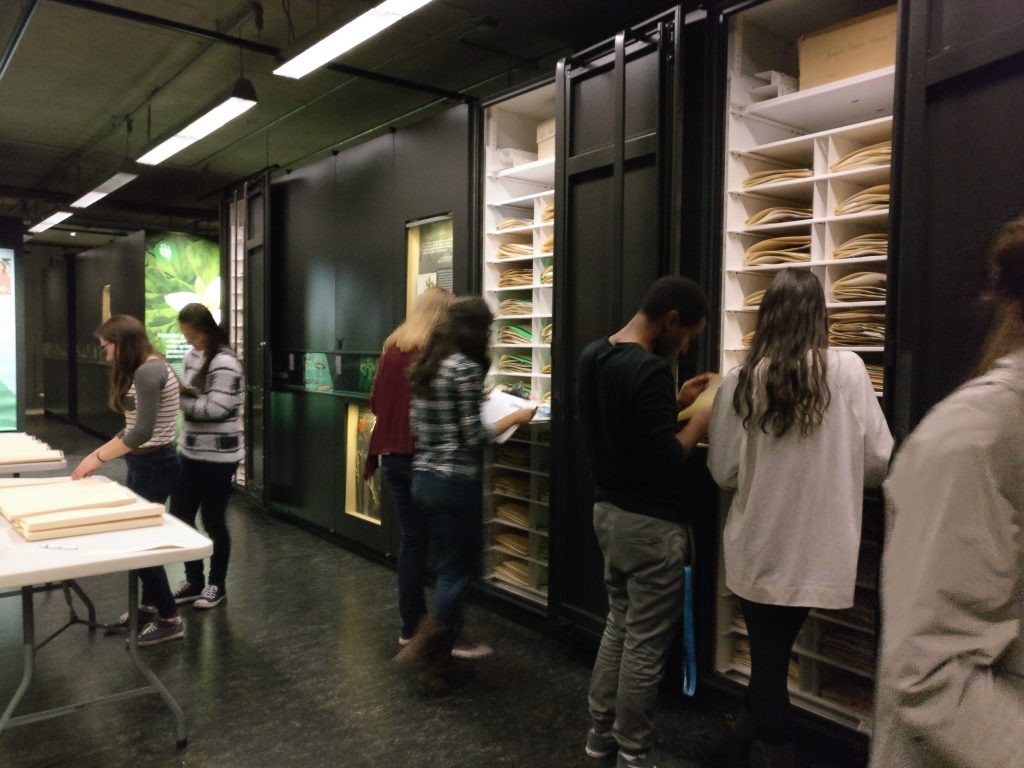
Linda Jennings loves seeing undergraduates engage with the Beaty Biodiversity Museum collections. As a Herbarium Collection Curator at the Beaty, Linda is always looking for ways to engage with undergraduate students. “For me, the big thing is getting students to use the collections, and not having barriers.”
Linda and her colleagues have been working with faculty and TAs over the past several years to come up with new and innovative ways to integrate the museum collections into UBC courses and get more students involved. “I think for a while there was a real limitation for instructors feeling like they couldn’t utilize us, but I think many have now figured out there’s a variety ways to do it.”
Recently celebrating its tenth year in operation, the museum has a lot to offer. In addition to the whale, it is home to 2.1 million specimens, map collections, a library, and even a green roof with a wide diversity of BC native plants, many with species signs and even mapped as part of Campus Botanica. Visitors can also engage with the museum virtually – all of the collections are mostly databased and partly imaged and available in searchable format online.
Below, Linda explains why she is so passionate about engaging undergraduates, how students are using and responding to the collections, and how you can use the collections in your course.
Why are you interested in having undergraduate students use the collections?
In one of my first undergraduate courses, we went into the field and pressed specimens. This experience really drew me in and changed the way that I understood science, laying down the foundation for what I do now in my career. Since then I’ve come to appreciate the power of engaging with specimens and how much students can learn through the process – how to use biological data, what assumptions are being made, how to take good data in the field, and, of course, the people and the history involved in the collecting.
It’s really about turning students on to science, and turning them on early! I want them to be exposed in first, second, third, and fourth year, because it’s through layers of exposure to the collection in different ways that students develop wider knowledge and a better understanding of how the collections can be used. So by the time they are taking 300 and 400 level courses, we can start talking to them about doing real projects, with real questions and predictions, and using our collections in their early undergraduate research.

What are some ways that Biology instructors are using the collections in their courses?
There are many ways that people in Biology are using the collections, at all course levels. Here are a few examples:
- Brett Couch recently used the museum in the BIOL 323 mycology course. He has students do art drawings of their mushrooms and we then display them in the museum as part of their final project. They’re actually being projected right now in the museum and their identifications and pictures are available virtually on our Beaty Flicker site.
- Previously, Mary Berbee had her BIOL 323 class collecting in Lynn Canyon and depositing in our herbarium for the last 15 years. We have a consistent collection every year from her class over the last 15 years, which will be a really interesting project one day to pull that data and have a good look at the mushroom distributional changes over time.
- For Darren Irwin’s BIOL 427 course, the Cowan Tetrapod group tagged all of the images he wants students to access with his course number so that they can access them through the database search. This way students can have the feel of being in the collection virtually and can find exactly what specimen he wants them to see.
- I collaborated with Bridgette Clarkston to develop BioBlitzes for her BIOL 209 course, where students get to inventory a part of the collection and help us find specimens that are missing. We have found thousands of specimens because of undergraduates, and they’re now in our database, which never would have happened without these BioBlitzes and students.
- Bridgette and I also recently found a way to incorporate a BioBlitz activity into large size classes like the BIOL 121 course by having students do label transcription through Zooniverse. Over the last three years her students have transcribed at least 3000-4000 specimens. These undergraduates have actually learned about science by facilitating science, a win-win!

How have students responded to using the collections?
They absolutely love it! When we started the BioBlitz with Bridgette’s courses, I didn’t realize how many students were going to get excited and want to get involved. For example, I’d have students who didn’t want to leave when class was over because they wanted to finish the folder they were working on. I also had lots of students ask if they could volunteer to continue databasing the specimens – in fact, so many that I couldn’t take them all! I think that the collections are slightly addictive and that the process of hunting and finding things really aligns with students’ natural desire to figure out puzzles and contribute to research and science.
If someone would like to use the collections in their course, how would they do it?
There are six collections that can be used individually or combined, depending on the needs of the course. You can contact the individual curators if you’re interested in the individual collections themselves, and especially if you want something really specialized. For example, for BioBlitz activities, I work with every instructor to make it specific for that course by modifying the questions and making sure that it’s relevant to what students are learning in that course. Not all curators can accommodate all requests, but its best to reach out and see what types of resources are available.
As an instructor, you can also sign up to do a self-led tour or museum-led program or tour that Jackie Chambers and her amazing outreach team have put together. You can sign up online here.
Is there anything else you’d like to share?
In addition to the collections, images, database, library and maps, we also have extensive knowledge and expertise. Collectively among the museum curators, we have 130 years combined experience and expertise, and if you add in all department curators, you’re now looking at up to 250 years of knowledge! Feel free to shoot us questions about using collections in undergraduate teaching, available remote and face-to-face resources, and any questions about biodiversity in general. We are here for you, so utilize our knowledge!